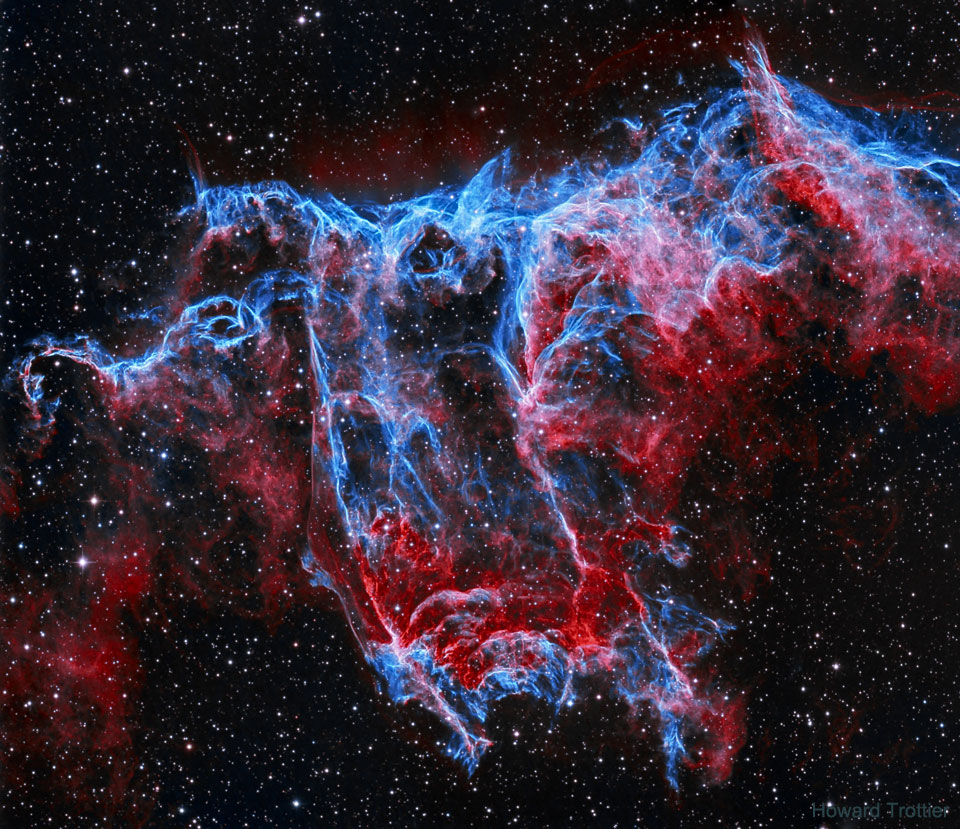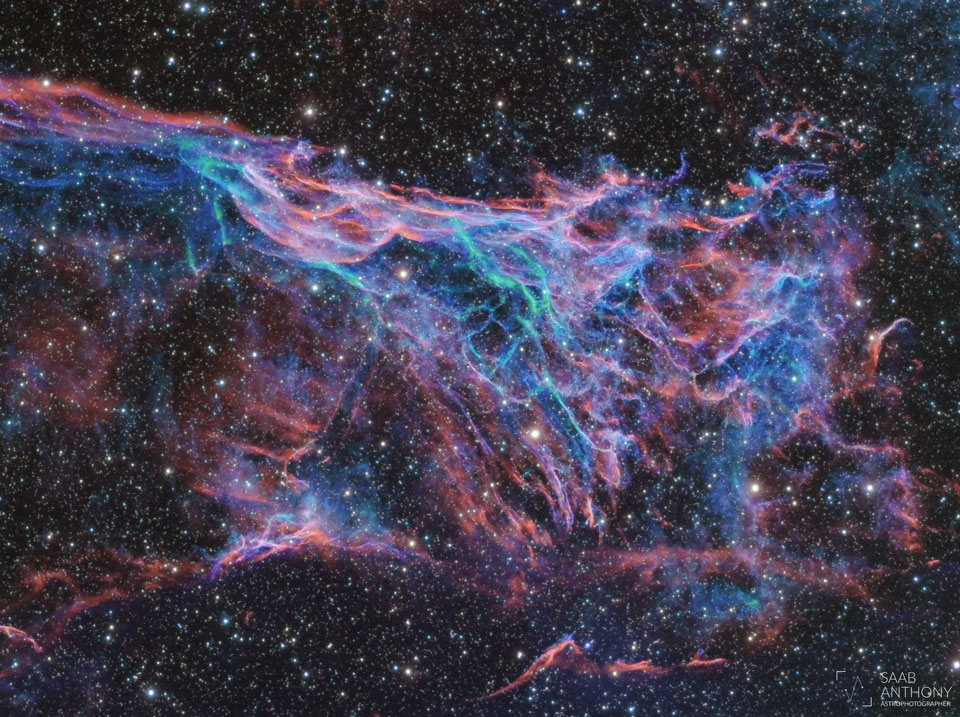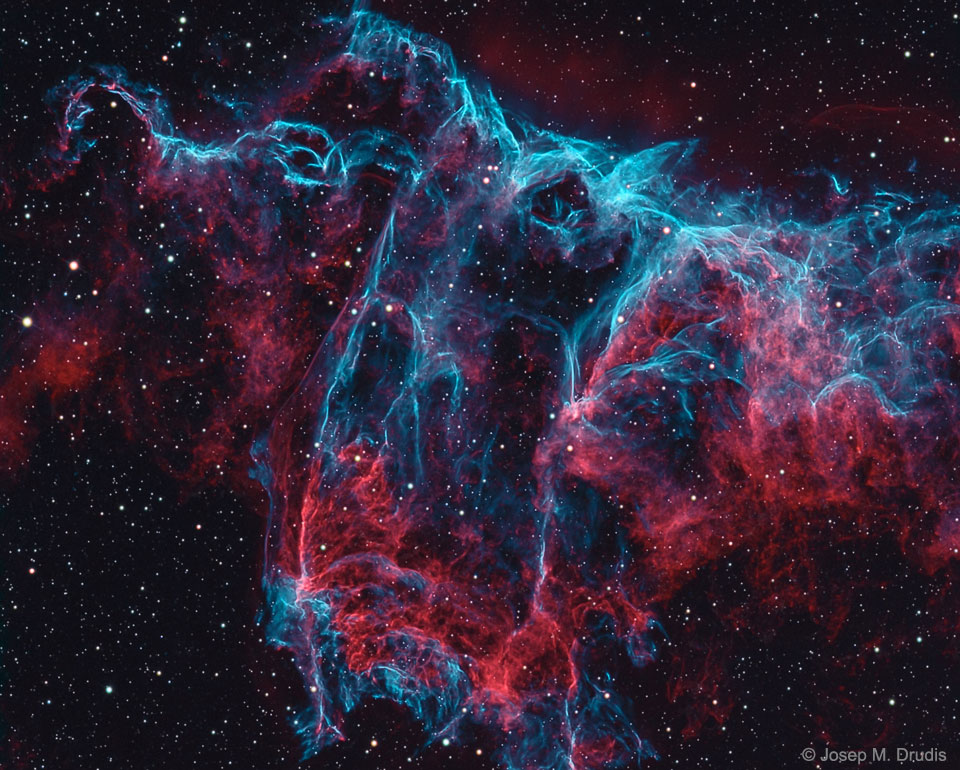NGC 6995: 蝙蝠星云
The featured image shows a starfield with a multi-colored nebula in the center. The nebula is quite filamentary but appears to some like a bat. Please see the explanation for more detailed information.
这张特色图片展示了一片星空,中央有一个色彩斑斓的星云。星云呈丝状,但有些人觉得它像一只蝙蝠。有关更多详细信息,请参阅说明。










